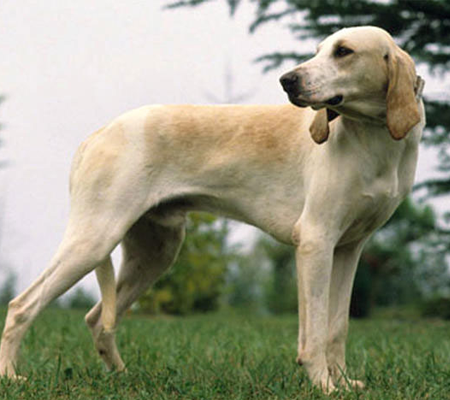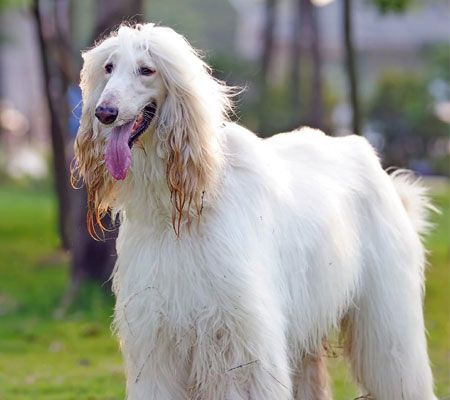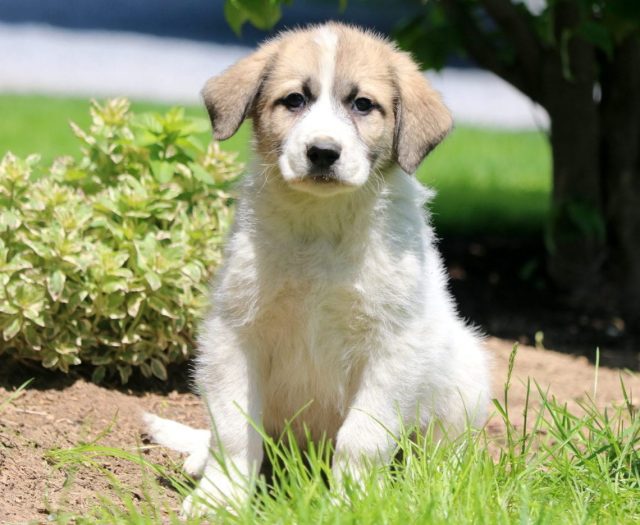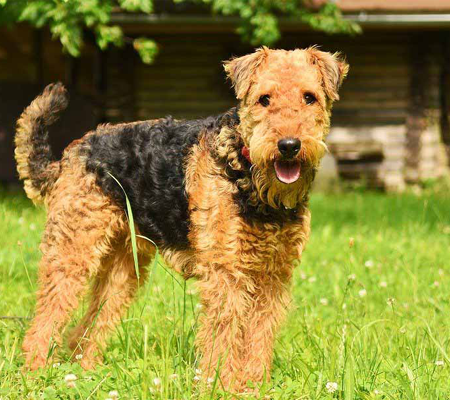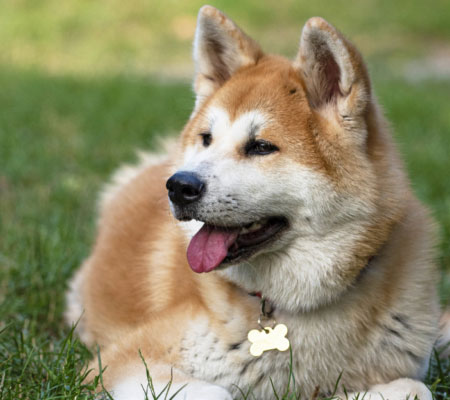The Billy is a stylish scenthound with large
ears, powerful legs, and short, silky hair. They have a snout that is medium in
length with a brown, reddish brown, or black nose. Their upper lip does not
dangle much below the bottom lip, unlike many other scent hounds. The
predominant hue of Billy's fur is a light shade of white. Pure white, off
white, or a tan white are all possibilities. Spots of various hues, such as
orange, brown, light yellow, or tan, can be found on them.
Billy Dogs Highlights
Breed Size
Medium
Nature
Gentle, Friendly, Playful, Outgoing, Willful
Energy Level
Active
Intelligence
High
Barking Level
Frequent
Coat Length
Short
Breed Group
Hound
Droll Amount
Low
Good with
Familes, Children, Dog
Feed Level
Medium, High
Colour Type
Pure white, off-white or gray, sometimes with orange or lemon spots on the head and body.
Other Facts
Easy to train, easy go to for walking, easy to hanndling for their owners.
Dog History
The King's White Dog, which was utilised as a
pack hunting dog for royalty and nobles in France during the 1700s, gave birth
to the Billy dog breed. This hunting breed became extinct as a result of the
French Revolution, leaving only their DNA in other mixed dog breeds. Future
hunting dogs and scent hounds will be produced from these hybrid dog breeds.
Beginning in the 1800's, the nearly extinct King's White Dog was mated with
other canines. Ceris was created by crossing the King's White Dog with Swiss
hounds. The first Billy dog was created by crossing the Ceris with many other
breeds such as Layre breeds and the Montemboeuf. Gaston Hublot du Rivault is
responsible for the development of this unique canine breed with a superb nose
and strategic hunting talents. The Billy Dog was developed to hunt in groups,
particularly large game like boar and deer.
As the Billy dog's popularity grew, more and more
French people began to employ them to go hunting in the countryside. They were,
and continue to be, multi-talented hunters of hare, deer, wolves, boar, and
everything in between. A breed standard for the Billy dog was published in
1886. This ensured that the characteristics of this dog breed would remain
largely constant throughout time. Both world wars had a catastrophic effect on
the Billy breed in the early 1900s. Because the Billy dog was mostly utilised
in France, there were few options for ensuring the breed's survival. After
WWII, just twelve Billy dogs were said to be living. Because of this
significant loss, other breeds may have been employed to resurrect the Billy
dog. Both Poitevin and Harrier hounds may have been employed to swiftly
generate additional Billy dogs.
Billy dogs are no longer endangered, despite the
fact that they are rarely seen outside of France, thanks to the breed's
revival. The Billy dog was first recognised by the Federation Cynologique
Internationale in 1973, and then by the United Kennel Club in 1996. Billy dogs
are still employed for pack hunting today, mostly in the French countryside.
22-27 inch 28-39 kg 13-15 year
Height

Weight

Life Span
Health and Care
Hereditary orthopaedic problems, such as hip and
elbow dysplasia, can have a significant impact on a working dog's ability and
should be evaluated for before breeding.
Billy's drooping ears, like those of many other
hounds, predispose him to ear infections throughout his life. A red ear canal,
extra waxy build-up, and a foul odour are all early indicators of infection
that an attentive owner could observe. They may also notice that their dog's
ear is agitating him and that he is rubbing it on the ground or scratching it
excessively.
In addition to cleaning the ear, the owner should
take the dog to the veterinarian, who will check the ear canal and provide any
necessary drugs, such as antibiotics or pain relievers.
To keep itself happy, this intelligent dog requires
a lot of exercise and mental stimulation. They benefit from being maintained in
a large residence and should have access to a safe and vast rear garden because
of their size. They should be exercised for one to two hours every day, in
addition to having a significant quantity of outside access. Hunting, scenting
activities, or jogs and treks are examples of this type of exercise.
While keeping them busy is important for their
happiness, owners should not overlook their mental health. These canines appreciate
being given jobs and puzzles to do, and they experience a feeling of
accomplishment when they succeed.
Dog Breed Care Tips and
Important Instructions
- The disposition of the Billy Dog breed makes it a
powerful hunter.
- In Europe's deep woodlands, the Billy Dog was
developed to hunt Roe Deer and Wild Boar.
- Billys hunt in packs of several dogs, and they
hunt by smell.
- Today, many Billy Dogs are still utilised for
hunting.
- If you don't plan on hunting with your Billy Dog,
you'll need to divert his attention to something else.
- Billy Dogs are readily sidetracked when they
detect the whiff of anything attractive due to their excellent sense of smell.
- As a result, unless you are in a highly secure
gated location, you must always keep your Billy Dog on a leash.
- Even a well-trained Billy Dog could bolt if he
detects a particularly intriguing odour.
- If your dog gets too far away from home or
crosses a major highway, this may be highly deadly.
- Make sure your Billy Dog is microchipped and
wears identification at all times in case he or she escapes.
- The lively disposition of the Billy Dog makes it
a great hunter and active pet.
- If your Billy Dog isn't going to be hunting,
he'll need to engage in some other type of outdoor exercise.
- Your Billy Dog may get bored and destructive if
he doesn't get enough exercise.
- Hiking, running, riding, or a canine activity
like nosework are all good ways for Billy Dog to get some exercise.
- If your Billy Dog is digging, barking, or
chewing, he or she definitely needs more activity.
- Every day, a young Billy Dog need at least one
hour of rigorous activity. They also require daily mental stimulation.
Feeding
- This is an animal that may be overlooked during
feeding time and abandoned. This is a regular occurrence on many farms. On the
farm, the Billy is a highly important animal. There will be an issue if he is
unable or unwilling to breed.
- Make sure Billy is in good shape for breeding
season. During the breeding season, a Billy that is too fat or too lean will
not be aggressive. He can consume the same ration as the does when he is
breeding them. To assist maintain the billy's bodily condition and induce
ovulation in the nannies, they should all be fed around 1/2 pound of grain
every day.
- Even if you feed the Billy grain, he will lose
weight during mating season. When he's free of the does, make sure he's put on
a ration that will help him to regain the weight he's lost. Because male goats
are more prone to kidney stones than female goats, grass hay is preferred over
alfalfa hay. If you're having trouble with kidney stones, you can add.5% of the
entire ration of ammonium chloride to the ration. You should also make sure the
calcium-to-phosphorus ratio is between 1:1 and 2:1.
- Water
- When it comes to rearing and feeding any animal,
water is one of the most crucial components.
- Minerals Goats require a variety of minerals for
proper bodily function and high output. It's a good idea to give goats a
mineral that's been specially developed for them.
Fun Facts
- He was orphaned when he was a teenager.
- The Kid was arrested for the first time for
stealing clothing from a laundromat.
- In a frontier dispute, he was a key figure.
- The Kid never attempted to rob a train or a bank.
- He was a suspect in at least nine homicides.
- Butch Cassidy: 6 Things You May Not Know.
- His First Arrest Wasn’t Very Notorious
- Billy the Kid Was an Orphan
- He Didn’t Shy Away from Feuds
- His Death Toll Kept Rising
- He Died at a Young Age
- His Death has Become a Myth
Home Training Tips and General
Information
To avoid the Billy becoming confused and so that
they can learn to comprehend commands quickly, just one person should be in
charge of teaching them to begin. When there are too many individuals
attempting to train your Billy at the same time, the process might come to a
standstill.
Positive feedback should always be used. When
your Billy accomplishes anything good, you should applaud him so he knows he
did the right thing. Never force Billy to obey orders if he doesn't comprehend
them. Billys are not as intelligent as humans and take longer to learn. What
you must recognise is that a Billy will not immediately obey all of your
directions after just one training session; it will take several efforts to
break in your Billy.Do not push Billy since he may acquire fear, which will
limit his capacity to learn and be broken in. Trainers can use food or treats
to reward Billys, but they should not go overboard.
One at a time, teach commands. Attempt to teach
him one command at a time. If he can't recall it, try to stick to that lesson
simply because adding other directions would most likely just confuse Billy.
Starting with the basics is a good place to start.
Keep your tone joyful when teaching skills so
Billy will eagerly follow your instructions. A calm, coaxing tone elicits a
response from Billys. When you yell loudly, he may become unresponsive and
fearful.
Billy should be practised in a variety of
settings. When you confine Billy to a single area, such as your home, he may be
unable to acclimatise to a new environment with new people. Take him to your
local park or for a stroll around your neighbourhood. This will help Billy
become better acquainted with other persons and breeds.
FAQS
|
Billy the Kid is well-known for what he did. |
|
Billy the Kid (September 17 or November 23, 1859 – July 14, 1881), also
known by the pseudonym William H. Bonney, was an American Old West bandit and
gunfighter who killed eight men before being shot and killed at the age of
21. |
|
Is Billy the Kid able to communicate in Spanish? |
|
Billy travelled from New York to Wichita, Kansas when he was a little lad
in the early 1870s, and subsequently to New Mexico. He immediately adjusted
to his surroundings and was able to communicate successfully in Spanish. Billy's
mother, unfortunately, grew quite ill and died of TB in 1874. |
|
What is the true name of Billy the Kid? |
|
Billy the Kid, real name William H. Bonney, Jr., original name Henry
McCarty?, (born November 23, 1859/60, New York, New York, United States—died
July 14, 1881, Fort Sumner, New Mexico), one of the most notorious
gunfighters of the American West, reputed to have killed at least 27 men
before being shot and killed at the age of 21. |
|
How many times did Billy the Kid manage to get away? |
|
William Bonney was imprisoned in Lincoln in the spring of 1881, at the
end of the Lincoln County War, after being tried for the murder of Sheriff
William Brady. On April 28th, he would make his final escape from the
courtroom cell, killing Deputies JW Bell and R. Olinger along the way. |
|
Was Billy the Kid actually Brushy Bill Roberts? |
|
Brushy Bill Roberts said he was born in Buffalo Gap, Texas, as William
Henry Roberts. Billy the Kid was his moniker from a young age. He changed his
identity to Oliver P. Roberts after escaping from jail in 1881, and he used
it for the remainder of his life until his death in 1950. |
Billy Dogs Unique Name
| Male Name | Female Name |
|---|---|
| Bingo | Annie |
| Buddy | Athena |
| Cain | Betty |
| Dante | Chance |
| Dylan | Harley |
| Elmer | Jasmine |
| Fisher | Juliet |
| Gordie | Juno |
| Hunter | Kira |
| King | Layla |
| Kobe | Missy |
| Luke | Misty |
| Maverick | Shadow |
| Pablo | Shelby |
| Scout | Stella |
| Thor | Butterball |
| Oscar | Cha Cha |
| Banjo | Claire |
| Tommy | Laney |
| Winnie | Nova |

